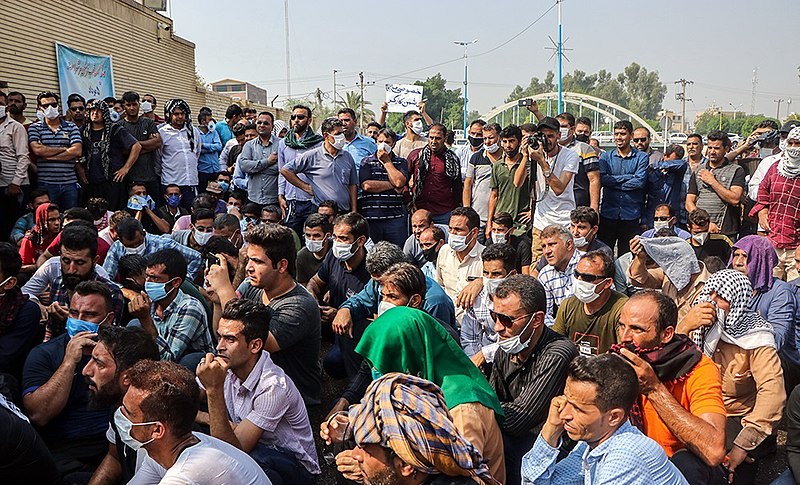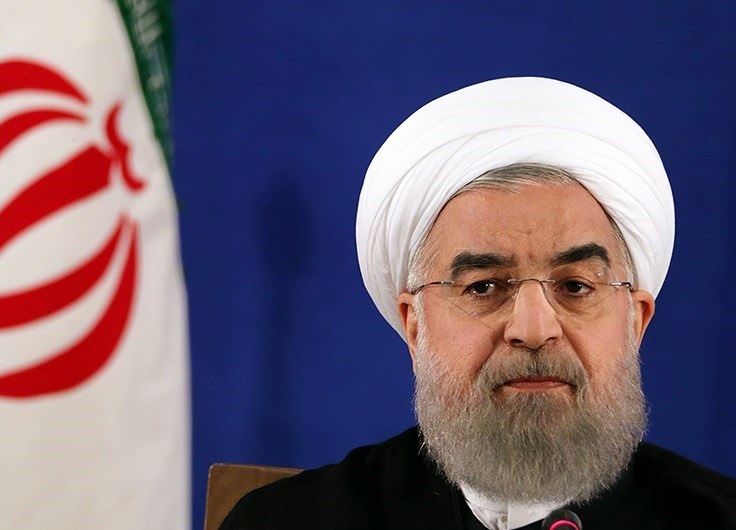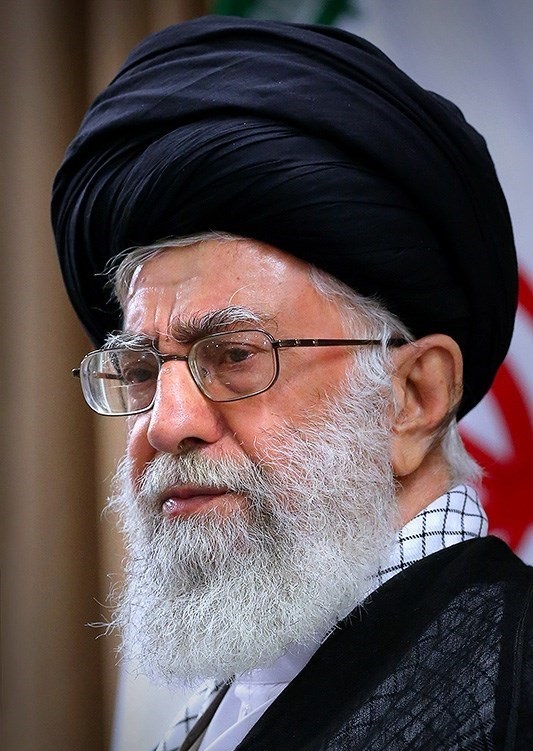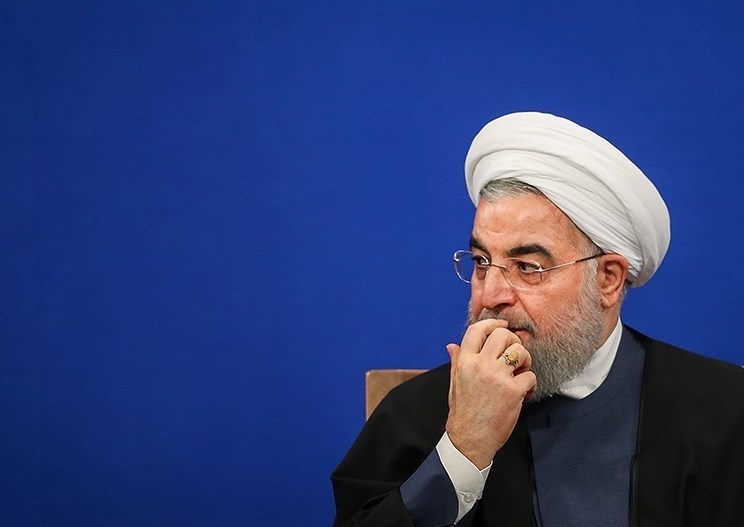On Wednesday 25 November, five strikes broke out in the Iranian oil sector. At least three thousand workers have come out, demanding their unpaid wages to be paid and the previous promises of the management and the government to be fulfilled. This is a part of a continuing strike wave, which in October saw the largest number of strikes since the Iranian revolution of 1979.
While the regime has attempted to lull the workers with promises and half-concessions, the strikes and protests have continued. Increasingly the workers are seeing through these empty promises and going onto the offensive. In the last month there has been over 100 protests and strikes reported from every sector of the economy: agro-industry, the oil-gas sector, railways, municipalities, farmers and more.
During the beginning of October the oil-gas workers organized the largest trade union coordinated strike since 1953 involving 25,000 workers across Iran. The Regime desperately promised concessions to bring an end to the strike which quickly spread to other sectors of the economy. These promises proved hollow with wages still not being paid and employers threatening to fire workers who pursued the demands of the strike. Thus, while the big strike died down, smaller sporadic and spontaneous protests and strikes began to erupt across Iran including: Assaluyeh, Razi petroleum company, West karun oil fields, South Pars and Kangan and more. On Wednesday, these companies then stepped up these struggles, and went on a more coordinated and organised strike.
Railway workers across Iran also went on strike during October, demanding payment of unpaid wages, insurance and equal contracts for contractors. Once again the bosses made a series of promises, but none of these were fully implemented. A railway worker from Khorasan described the situation, “The employers have betrayed us. The Labour House [the state unions - ed] only makes empty promises”. This has forced the railway workers into struggle with ongoing strikes in Khorasan, Markazi, Tabriz, Khuzestan and more. Among them are the workers of the Traverse Railway Technical and Construction Company, which is also the biggest private contractor in Iran. These workers have organised a campaign of demonstrations and strikes throughout November demanding the renationalisation of the railways and for them to be employed on the basis of permanent contracts.
Haft Tappeh: The Struggle for Nationalization
The Haft Tappeh sugarcane plantation strike has been in the national spotlight as the most militant strike demanding nationalization under worker’s control, the recognition of their trade union along with economic demands such as, the payment of unpaid wages and renewal of their social insurance. Following their 40-day strike the regime promised nationalization of the company, the arrest of their current owner Omid Asadbeigi for corruption, the renewal of their insurances and the payment of unpaid wages. However, the regime never completely fulfilled any of these promises, and instead started a period of infighting through the courts over the possible nationalization of the company.
 The Haft Tappeh sugarcane plantation strike has been in the national spotlight as the most militant strike / Image: Mohammad Ahangar
The Haft Tappeh sugarcane plantation strike has been in the national spotlight as the most militant strike / Image: Mohammad Ahangar
This has only hardened the resolve of the workers. And on 13 September the Haft Tappeh trade union threatened that “the workers will be forced to pursue their demands with their collective strength”. On 3 October they reissued a detailed programme of their demands, which we publish in part here:
“1. Immediate payment of all unpaid of wages and benefits
2- Return of all fired workers, including non-sugarcane workers) to work and payment of salaries and benefits Period of their arrest or expulsion
1. Recognition of independent labor organizations and specifically the Haft Tappeh workers' union by the government
4- Recognizing the right to protest, strike, rally, etc.
5- Recognizing the elected independent representatives of the workers in the field of monitoring safety and health conditions at work, preventing accidents, observing working hours, etc.
6- Disposing and removing responsibility from all management agents formerly. Company managers must be approved by workers.
To prevent all kinds of embezzlements, thefts and embezzlements, it is necessary:
a) Workers to supervise the production, employment, machinery and raw materials, production warehouse, company-owned lands to prevent the sale of land by their elected representatives. , Try to prevent dismissal and try to stabilize and institutionalize these cases in Haft Tappeh Company.
b) The company's accounts include the balance sheet, profit and loss account, and cash flow account or changes in the company's treasury, and the workers' representatives have the right to review the documents related to these accounts.”
The regime has reacted aggressively and attempted to break the workers through intimidation, by sending thugs to attack the workers and by firing trade union activists. This immediately led to daily protests and work stoppages breaking out from the 10 October. On 29 October the regime used the protests as an excuse to arrest five union activists for “disturbing public order”, while the protests intensified with the slogan “death, death to Assadbeigi”. In the course, the trade union activists were faced by extortive bail sums amounting to seven times their monthly wages per worker. In spite of this, the trade union managed to collect the necessary money to post bail. However, the courts still refused to release the prisoners and transferred them to prison.
It was clear that this was an organized conspiracy against the haft tappeh trade union by the regime and the owners. Besides their actions through the courts, they also sent the police and hired thugs to intimidate the workers, as well as the provincial Friday imam to try to convince the workers to end the protests. On 3 November the Haft tappeh trade union in a statement took a clear class position exposing what was happening: “The ruling class and the state are becoming more and more united, using all their forces to continue exploitation, discrimination, oppression and repression.”
The haft tappeh union and its militant demands, have been beacon for the class struggle in Iran for the past period. That is why the union was singled out by the regime. But by appealing for solidarity overnight 40 Iranian labour organisation declared their support for the struggle and its demands. This forced the regime to free the imprisoned workers on 5 november but the conspiracy continued the next day with soldiers of the army occupying the company grounds and stopping 15 union members to return to work. This was followed by further protests and a new solidarity appeal forcing the regime to back down and remove Asadbeigi as the owner. However, Haft tappeh’s future still remains uncertain.
While this is far from the end of the road for Haft Tappeh, this was a huge victory, for the working class, in a struggle which has lasted decades. This success will undoubtedly imbue the Iranian working class with confidence in its coming struggles.
The haft tappeh union has made it clear that for them it does not end with Asadbeigi saying in a statement “Assadbeigi is overthrown, but our struggle and protest against this whole oppressive and profiteering system continues. The politicians do nothing for the benefit of the workers and the toiling people”. Within these lines, the outline of the future class struggle in Iran can be seen.
Horror without end
The working class is facing an unprecedented crisis. Inflation is soaring at 41.4% since March. In reality it is much higher. Many essential goods such as dairy, eggs and rice have nearly doubled while wages have either fallen or simply not been paid. All while unemployment is rampant at 37%, forcing workers into informal employment which makes up 60% of the workforce. These workers have no rights or social insurance. The result is that nearly half of Iran’s population is excepted to be living in extreme poverty by the end of 2020. As a worker from the Assaluyeh strike explained “I cannot bear it anymore coming home empty-handed unable to fill the table I see no other choice than to struggle for my rights”.
The Rouhani government is incapable of dealing with the current crisis. The economy is completely paralysed by the US imposed sanctions as well as the ongoing world economic crisis, and as an effect of decades of capitalist mismanagement. Exports have fallen by 37% in the last 8 months with the lowest figure in a decade. Even oil exports to china who has largely ignored sanctions has halved, a result of the world economic crisis. Meanwhile the programme of subsidies and bailouts to the capitalists is coming to its limits with Iran’s currency reserves falling to record low levels, leaving only the option of printing money which will inevitably lead to run off inflation. Already there have been series company closures mainly concentrated in light industry with widespread lay-offs especially of workers with informal contracts. At the same time, corruption is rampant with the bourgeoisie, far more busy with filling their pockets than to address the problems of society.
 The Rouhani government is incapable of dealing with the current crisis / Image: Mahmoud Hosseini
The Rouhani government is incapable of dealing with the current crisis / Image: Mahmoud Hosseini
This is all while the Covid-19 pandemic continues to rage across Iran in its third wave. The official total number of deaths is 47,000 but the real number is excepted to be 3-4 times more - if not more! The number of excess deaths during the first quarter of the Iranian year (mid-March-mid-May) stood at 90,000, indicating a huge level of under-reporting of coronavirus deaths by the regime. The health care system, which is understaffed, and under-equipped, has been completely overwhelmed. Nurses are working 12 -20 hour shifts and in some cases 36 hours shifts, while being paid 70% less than promised - if they are paid at all - under 89 day contracts! Lacking the protective equipment for dealing with the pandemic 1 in 5 nurses has contracted Covid-19 and many have died.
The government’s measures in dealing with the pandemic was characterised. At first it denied that there was any problem. Then admitted the problem but followed up with extremely disorganised lockdown measures; without concerns to the livelihood of the masses. This was followed by the complete lifting of all lockdown measures in September leading to a second wave. From the beginning of the pandemic there have been constant protests by nurses fighting on the front lines for unpaid wages, permanent contracts and the resources needed against the pandemic. Many nurses have been doing nothing but working, and protesting to get their wages, protective equipment etc in between their long shifts.
The strike and protests movement of other workers such as Assaluyeh oil workers, Teachers, Iran khodro and many more have also taken up demands for workplace social distancing. Since November Iran is in its third wave of the pandemic with 13,843 new cases on the 26 november with +900,000 known cases. This was followed by limited lockdown measures. Even the state epidemiologist, Mohammad Reza Mahpourstar was infuriated with the situation saying that, “It is crystal clear that economic and day-to-day concerns are more important than the people’s lives” and that “It shows that the national Covid-19 taskforce with security agencies behind it are pursuing other goals”. The regime is terrified of the prospects of a new popular uprising. It is therefore using lockdown measures to declare unofficial martial law to intimidate the population.
“Reformist or principalists, it never ends”
All the economic measures promised by the Rouhani government to address the crisis have been inefficient, ending up either being eaten up by inflation, disappearing through a web of corruption or never being realized. Lockdown measures without government aid is leading the baazaris and street vendors into bankruptcy; joining the workers in poverty. All while in order to avoid a budget deficit there has been an escalation of privatizations. This has caused increased the split between the Rouhani government and the conservative “Principalist” faction of the regime, which is tied to the religious establishments and the state apparatus. The Principalists are against privatization, because it would weaken their hold of formally state held companies. The Principalists have been attempting to present themselves as the defenders of the public sector, but in reality they treat the public sector as their private estates with rampant nepotism and corruption. They are only defending their own interests.
Both factions have demagogically used corruption scandals as a political weapon against one another with a record number of arrests and ongoing investigations into the state apparatus including the judiciary and parliament as well as privatized companies. The most high profile cases have been against cabinet members, the arrest of president Hassan Rouhani’s brother and son, but also the former Chief-Justice Akbar Tabari linked to the religious establishment and the Supreme Leader Khamenei himself. Principalists have attempted to appeal to the workers protesting against privatization. But the fact is that all representatives of the regime, whether in the private or state sector, are corrupt to the bone. Their only interest is self-enrichment, whether by theft or exploitation of the working class. Both of these wings belong to the same rotten Iranian capitalist class.
 The most high profile cases have been against cabinet members, but also the former Chief-Justice Akbar Tabari linked to the religious establishment and the Supreme Leader Khamenei himself / Image: farsi.khamenei.ir
The most high profile cases have been against cabinet members, but also the former Chief-Justice Akbar Tabari linked to the religious establishment and the Supreme Leader Khamenei himself / Image: farsi.khamenei.ir
In November 2019 the Islamic republic was faced with one of the biggest uprisings in its history; for a period of three days there were hundreds of thousands protested across Iran. These were violently put down with hundreds killed, thousands wounded and many more were arrested. Only a month ago when Sharjarian, an extremely popular Iranian singer, known for his progressive views passed away, anger poured into the streets across Iran, with memorial gatherings everywhere quickly turning into demonstrations. Protesters sang illegal revolutionary songs and chanted slogans such as “death death to the dictator” but these were quickly dispersed. The last years of protests and strikes have cut deep wounds into the regime. The February parliamentary elections had its lowest turn out, to date. It is clear that the regime cannot rule the country as before. The economic crisis and the pressure is increasing the divisions and intern strife at the top. It is seeped in crisis from top to bottom and is unable to find a way out any time soon.
“Long live the national strike movement”
The working class can only depend on its own strength. The trade unions and campaign organisations which have developed and strengthened since 2018 are a sign that the class beginning to move. These include the mechanical metalworkers union, the haft tappeh sugancane workers’ union, the railway workers union, committee for the formation of trade unions and many more. The mechanical metalworkers union, played a leading role in the oil-gas workers’ national strike in October, showing the strength of the Iranian working class. Though the current strikes and protests are mainly isolated and limited to economic demands, as we can see with the Haft Tappeh workers, these struggles can easily lead to political revolutionary demands.
The way forward, is for the workers organizations to unify and prepare a national struggle on the basis of common programme of political and economic demands including: the right to strike and protest, reversal of all austerity from past period, opening the books in all the banks and major companies, and laying the foundations for the imprisonment and expropriation of all those who have proven to be corrupt. Other demands that should include are the renationalization of all privatized companies under workers’ control, and the introduction of such control throughout the state-owned economy. In face of the immediate tasks of the COVID-19 pandemic the healthcare system should be fully nationalized and placed under workers control along with any related industries.
Such a programme would find a wide echo in Iranian society, where revolutionary anger is simmering. The only reason the November 2019 uprising was crushed was its lack of leadership and organization. It lacked the organized force of the working class which could’ve issued a general strike, called upon all the working masses: the middle classes, students and farmers and organized committees of struggle against the regime. Such a movement would swiftly have broken the back of the rotten regime. Only the working class can lead Iran out to the dead end which is Iranian capitalism.

